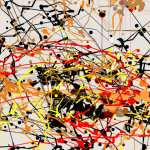They may not be teaching this in MBAs, but a company is a complex system ruled by non-linear interactions that make it difficult to make any prediction when any change is effected. That’s why any approach to improve the company has to be “holistic”, i.e. address the whole system, and consider all the interactions/interdependencies.
What is the guiding rule that should inspire any managerial decision? The job of Management is to work on the system and create a predictable environment; as Dr. Deming reminds us, “the job of managers is to reduce variation ”.
The description of what everybody does, input and output, understanding the interdependencies and, finally, understanding the variation associated with each process, is foundational to any form of “intelligent management”.
Statistical Process Control (SPC), the main offspring of the Theory of Variation, is the body of knowledge that helps managers to act rationally for the improvement of the system. SPC is not a technique; it is a way of thinking that should be fostered by Top Management at every level in the organization.
The data and the way we collect them are as important as the analysis we perform on them. The starting point to understand the system and its different processes is to select key points where we monitor variation. Once we have identified these points, we can start with the analysis.
Understanding processes
The most practical way to understand processes is to draw a picture of them, by means of a flowchart. A flowchart is a diagram that describes a sequence of events, tasks and decisions that transform input in a process/system into output. Flowcharts use some standard symbols and conventions to make it easier to communicate and understand them and portray a process with a map or chain of activities and decisions.
We can describe the flow of materials, information and documentation; we can show the various activities included in the process, explain how these activities transform input into output, indicate the decisions that have to be made along the chain; we can design interrelations and interdependencies among the various phases of the process that are important, and we can easily acknowledge that the strength of a chain depends on its weakest link.
In describing processes we realize that it is very difficult to establish very precise borders between departments and functions. In order to deliver a product, or provide a service, these fictitious separations are often crossed. We see, therefore, that these processes cut across a traditional organization chart or organization pyramid. Flowcharts are then the key to developing understanding of if, how, and where every single link is adding value to the chain.
Using flowcharts
“…a flow diagram also assists us to predict what components of the system will be affected, and by how much, as a result of a proposed change in one or more components…” (Deming, The New Economics).
What we do is to map out processes and compare them with how they should ideally work, so as to understand where complications lie, identify misalignments between authority and responsibility if any, look for critical points, and determine breakage points in the chain that link the supplier with the customer.
From this analysis we have to recognize ‘Key Quality Characteristics’ (KQC), i.e. aspects of the processes that heavily influence their capacity to contribute to the goal of the system. By highlighting these critical characteristics, we can identify the points where it is more useful to gather data on the variables of the processes. From the analysis of these data we can understand whether the processes are in control (predictable) or not before taking any action to improve them, and whether improvement actions are effective or not.
Sign up to our blog here and shift your thinking towards broader, systemic possibilities for yourself and your organization.
About the Author
Angela Montgomery Ph.D. is Partner and Co-founder of Intelligent Management and author of the business novel+ website The Human Constraint . This downloadable novel uses narrative to look at how the Deming approach and the Theory of Constraints can create the organization of the future, based on collaboration, network and social innovation. She is co-author with Dr. Domenico Lepore, founder, and Dr. Giovanni Siepe of ‘Quality, Involvement, Flow: The Systemic Organization’ from CRC Press, New York.






Leave a Reply